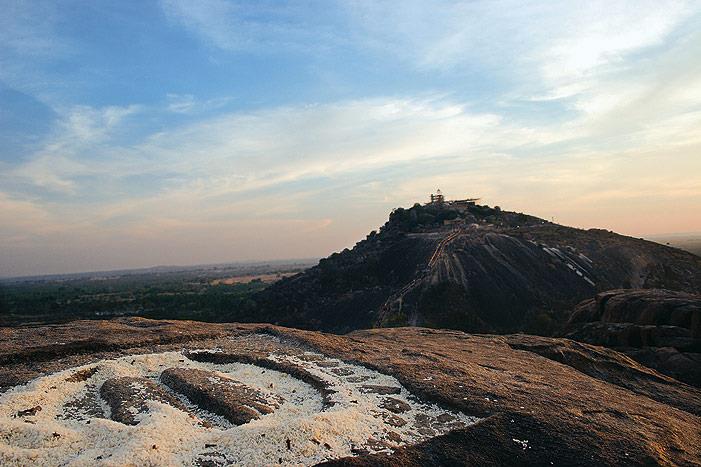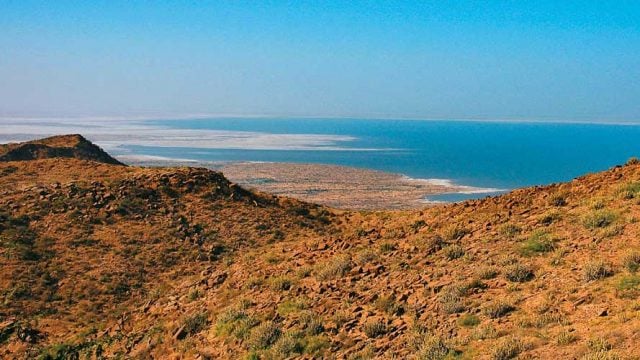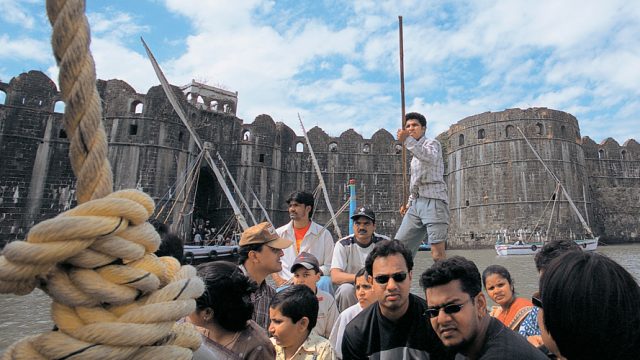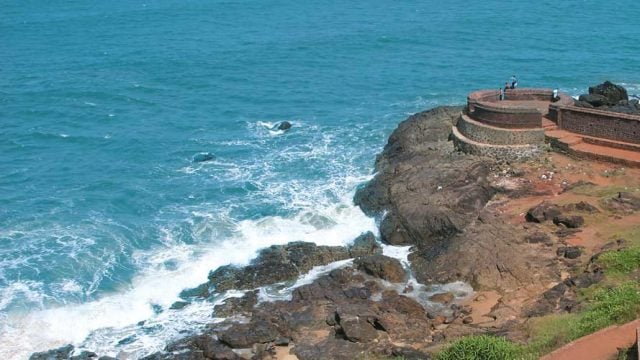The word bhaiya is permanently ingrained in my head. “Brother,” it’s the first word we
The plan was simple. Srikanth Kolari and I have set out to drive straight across the country from the Bay of Bengal to the Arabian Sea. We’d start on the coastline in Chennai where the sun rises, drive through the Western Ghats and arrive on the beach where the sun sets in Mangalore. Then we’d return through Coorg. The notion was that if we were a pair of scissors we’d lop off the big toe of India along NH48. But I don’t think there exists a pair of scissors that can cut our crooked path.
Without sounding too Zen about it, being on a road trip means being lost by definition. You start a journey because you think there’s something out there to learn. The only problem is that you have no idea what that lesson will be. And so with every stop, you ask yourself, is this where I’m supposed to find my lesson?
Srikanth and I start from the Nungambakkam neighbourhood in Chennai just before dawn on Saturday. The concept of lazy weekends hasn’t reached this city. We pass women drawing kolams on their doorsteps with rice flour to bring in the new day. Cricket matches have already begun on any patch of green. This is Chennai at its best — the hours before the rickshaws, the trucks and peddlers have created chaos on the streets. Before all the honking. I almost don’t want to leave when we pass Lake Porur still shrouded in the morning mist.
But as we continue west, palm groves and rice paddies replace the vestiges of city life. They’re only interrupted by the Vellore hills that jut out of the plain willy-nilly, studded with boulders that hover at unlikely angles. Among these hills rises a huge, white temple overlooking the road. It could be the lost city in the mountains of Tibet. It’s guarded by red and green bulging-eyed vahanams, fierce vehicles for God, that double as enormous pillars.
Like a pilgrim, it’s here at Rathnagiri Temple, between Vellore and Arco, where I seek my first lesson from the road. I climb some 200 stairs behind the followers who have come to see Balamurugan Admai, the sage of the temple. Forty years ago, when he was 28, the god Murugan appeared to him and commanded him to restore the temple, which had fallen into disrepair. He has never left since, and through his devotion the temple has grown magnificent.
Now I’m sitting in my Ford Fiesta on NH4 on the way into Bangalore, and my open horizon is the candy-striped bumper of a truck. The enormous banyan trees that drape the road are a nice change from Chennai, but the extreme traffic is not. As we crawl past the lopsided glass and steel cube of the new Infosys campus, and then the massive columns of the Roman Forum condominiums, I tell myself there must be more here than the tech boom we read about in the United States.
Later that night, we ride toward our hotel in the heart of Whitefield, Bangalore’s office park district. Huge buildings for over 150 information technology firms surround us. The way is dark and migrant workers wander the unfinished roads. Again everyone becomes bhaiya. We can’t find our way. Whitefield is not a city. It’s a city in the making — a concrete and girder jungle rising out of the ground. At 1am, lost and tired, it is menacing. The next morning it is mind-boggling. Bangalore’s soul is stretched between the mass produced office park, the village and the mall.
Over the following two days, sometimes the battle is against the road where the traffic grinds to no movement at all. Sometimes the roads just crumble apart — like when we come into Hassan. The dirt roads are hard-packed with sharp stones that have been buried by thousands of tyres. The car reaches 10kmph and I’m bouncing out of my seat like I’m on the back of a bull.
Hassan itself offers very little, but its drabness is counteracted by the exterior decorations of Halebid palace just 12km north. The art of the Halebid palace, the seat of the once prosperous Hoysala kingdom of the 12th century, offers some of the most captivating sculptures in India. The palace is built as an 11-layer star-shaped sandwich of sculpture that captures images from the Mahabharata and the Kama Sutra in soapstone. The longer I focus on each frame, the more it’s clear that each dancer, each Nandi or Shiva, was lovingly characterised in unique detail — the pain of tortured demons, the ecstasy of dancing Shiva is subtly conveyed in body gestures. Ten minutes away at Belur, the second palace of the Hoysala, the drama of the interiors are on par with Halebid’s exterior.
As we pass out of Belur, the road is clear, and a moment of cool takes over. The road, the rider and the car reach a kind of inevitability. We overtake pilgrims dressed in orange robes. We pass stray bulls and coconut groves, then lakes and rivers. No need to use the horn, we just go. And this is the reason why road trips exist. A calm thrill takes over. And everything is just right.
But the euphoria never lasts long. The truck route to Mangalore through the Western Ghats is lush and beautiful, but I wouldn’t wish it on my worst enemy. It’s steep, narrow and completely riddled. Trucks and buses come at us from behind hairpin turns with no warning. For a moment it’s paved and then suddenly without warning the road drops a foot into dirt, and the car scrapes bottom. It’s hard to take your eyes off the treacherous path, but when you do, you realise that you’re in the Ghats, and the lush thicket of trees that rise all around you come as a cool and welcome change from the heat of the plains below.
On a whim, Srikanth and I stop the car at the side of the Tapala, an easy-to-miss stream that gushes down a natural stairway of rocks in the woods below the road. After the extreme stress of driving, we both want to cool off and we climb down over the barrier into the bramble and along the rocks of the stream. When we finally get to the base of the falls, our pants’ legs are drenched and our hands caked in mud. It’s here where the Tapala reveals her mystery. The waters widen into a huge lake that has engulfed a still living forest. Entire oaks are submerged up to the branches — there’s something sullen about it, and I find myself pitying the fate of those grand, sunken trees. But we can’t stay too long, as treacherous as these roads are now, they’d be far worse at night.
So it’s a relief to reach Ullal beach in Mangalore on the Arabian Sea by sunset. It could be the recent strikes or it could be an off night, but Mangalore is asleep. Scant stragglers ramble along the beach, getting their toes wet in the warm Arabian waters. Some fishermen are mending their nets. Srikanth and I watch the sun sink into the sea. It’s a time for revelation. In theory, we’ve achieved the goal of our journey. But Mangalore is disappointing and my epiphany still hasn’t come. Later that night, we smoke a cigar under a starlit sky. I lie down in the sand, close my eyes and listen to the waves lash the beach. With all this driving, it’s my first moment of peace, but it’s short-lived.
At six the next morning, Srikanth and I head back to the Ghats toward Madikeri, the centre of Coorg. Again the single-lane road swings wildly, but we are surrounded by mountain vistas dense with foliage. The air is cool and fresh. We’ve arranged to stay on a coffee plantation-cum-resort, called Orange County. Here, serenity comes easily. Our cottages have private pools, and the staff is trained to pamper. It’s the first time I feel absolutely at ease. Walking among the coffee, rubber and pepper vines, we’ve finally escaped the congestion of the plains.
But when it’s time to head out the following day we have no place to go and have one more night on our trip. Having luxuriated at Orange County, I nearly forgot all about arrangements for the last night. Stuck in a bind, Srikanth and I meet 24-year-old Woeser, a physical therapist at a centre for disabled children in Bylakuppe, called Karuna House. During the month of February the students return to their homes for a break, so he arranges to put us up in the dormitories. We’re in luck. As we’re preparing our room, Woeser starts to tell us the story of his journey.
When he was 15, he and a group of Tibetans trekked through the dead of Tibetan winter to escape the Chinese on the Nepali border. Winters in Tibet are so cold and intractable that very often the Chinese border patrol doesn’t show up for duty. But on the night that Woeser reached the river that marks the border, he could see a light from one of the guardhouses. He and 40 other Tibetans decided to ford the river in the dead of night in order to escape notice.
“It was so dark that I could see nothing, but could feel blocks of ice flowing past my legs. I’ve never felt pain like that before, and at one point I remember thinking, I’d rather die than go on.” He smiles apologetically. “Why don’t you get some sleep? You have a long trip back to Chennai tomorrow.”
A wave of gratitude washes over me for his hospitality. Like the sage Balamurugan who ended up in his temple, Woeser went on his own journey and arrived here. My own trip led me to them — my bhaiyas. There’s a cycle of encounters here on the road. That’s what I was trying to find.
The information
Itinerary
Day 1 Chennai-Bangalore (280km; NH4, NH46, NH7) Day 2 Bangalore-Hoysala (175km; NH48) Day 3 Hoysala-Belur-Mangalore (125km; NH48) Day 4 Mangalore-Siddapur (125km) Day 5 Siddapur-Bylakuppe (30km) Day 6 Bylakuppe-Chennai (480km; NH46, NH7)
Route
The road from Chennai to Bangalore runs best and fastest through Vellore, though there is a northern route if you’d like to explore towns like Kolar and Chittor. Best leave by dawn to avoid truck traffic. The congestion around Bangalore is notorious, so you’ll need a shot of patience — there’s no avoiding it. Expect more traffic on NH48 between Bangalore and Hassan. The road quality is mixed, but for the most part it’s an easy ride.
NH48 between Hassan and Mangalore is a nightmare road that lasts 125km. It’s primarily a truck route and winds precariously through the Ghats. You’re likely to spend three hours behind a truck the whole way. The road from here to Siddapur is expectedly difficult, but for the most part it’s paved and the scenic views and fresh mountain air makes it exhilarating. Bylakuppe is only around an hour’s drive and if you’re allowed into the Tibetan Settlement, it’s well worth a visit to the Golden Temple for a view of the Buddhist murals and the three, two-storey golden Buddha statues.
Where to stay
Bangalore
I stayed at the Mapple Whitefield (Rs 2,700-4,500; 080-41157527/ 40324032) a small, newly-opened business hotel in the heart of Bangalore. HASSAN The Hoysala Village Resort (Rs 4,000-4,500; 044-42104541; www.trailsindia.com) consists of 33 beautiful cottages that are surrounded by great flowering trees and bushes. MANGALORE The Summer Sands Beach Resort (Rs 875-5,150; 0824-2467690/91; www.summer-sands.com) has unimpressive rooms but is a beachfront property. COORG Orange County (Rs 10,000-16,500; 044-42104541; www.trailsindia.com) is a luxurious property on a coffee plantation.
What to see
> Belur Temple, Halebid Temple, Shravanabelgola are all conveniently within two hours from each other.
> Visit Belur and Halebid to recapture the majesty of 12th-century Hoysala.
> Ullal Beach is the best spot in Southern Mangalore to watch the sun set over the Arabian Sea. The waters here are calm and warm.
Bangalore
Bay of Bengal
Chennai





